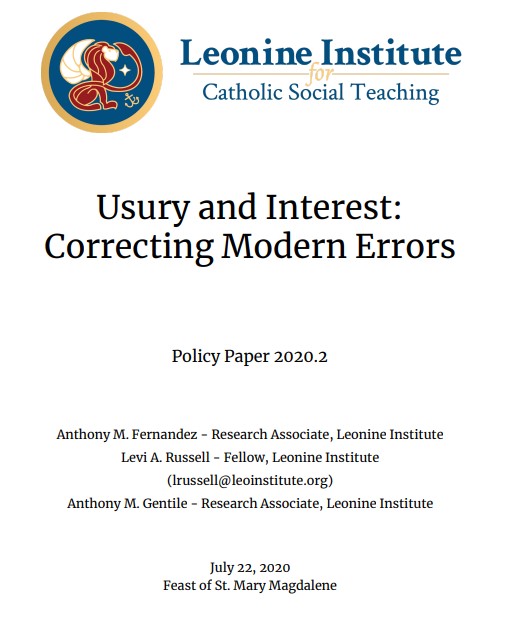By Aimee Rae
Canadians with heavy mortgages or credit card debt are watching Dec. 6 approach with the nervous optimism of kids waiting for Santa to declare if they’ve been bad or good. That’s the date when the Bank of Canada next sets interest rates, an announcement that for many Canadians could determine whether Christmas turns is holly and jolly or brings stockings full of coal.
From a Catholic social teaching perspective, however, the perilous economic landscape also raises challenging questions about the ethical implications of high interest rates and whether the state and financial institutions are encroaching on usury.
Levi Russell, chairman of the Leonine Institute on Catholic Social Teaching, says most people think of usury as the kind of gouging that applies to “very high-interest loans.”
But from a Catholic position, it can be shown that all consumer loans, including mortgage loans, fall within the definition of usury, said Russell.
The U.S.-based non-profit researches Catholic Social Teaching in economic policy and in 2020 released a policy paper on usury and interest rates. “We find that nearly all lending today is usurious and that other means can be used to allocate capital and lend to those in need,” the report said.

The core of the Church’s teaching on usury dates back to the 1745 encyclical Vix Prevenit (On Usury and Other Dishonest Profits) by Pope Benedict XIV. Since then many Popes have addressed the issue, including most recently Pope Francis, who in 2018 met with members of Italy’s Anti-Usury Council and appealed for “an end to the exclusionary and unfair economy that kills and reduces people to tools of a culture of waste.”
If not exactly genuflecting to Church social teaching in defining usury, the Bank of Canada has acknowledged the risk facing a good portion of Canadians renewing mortgages and struggling with consumer debt as well.
“We pay close attention to this,” the Bank said in a recent statement. In an anticipated move in October, the Bank held interest rates to five per cent, pointing to slowing economic activity amidst weaker demand and higher borrowing costs.
No one knows, however, whether that good news in the bad news will prevail. “Monetary policy is working, and we want to give it time to do its job,” Bank of Canada Governor Tiff Macklem said at the time. The Bank, however, maintained a cautionary tone, stating that “progress towards price stability is slow and inflationary risks have increased.”
What “works” for the Bank in terms of slow and steady inflation reduction continues to ramp up pressure on ordinary Canadians who must make monthly bank payments at a time when interest rates have rocketed more than 450 basis points in 20 months. That’s especially the case when it comes to the mortgage debt Canadians have taken on to own their own homes. A recent survey conducted by Angus-Reid found that the number of mortgage holders struggling with their monthly payments has doubled since March.
Unlike in the U.S., where 30-year mortgages are common, Canadian mortgage holders generally have much shorter terms. Variable-rate mortgages and those with a short-term fixed-rate (one to three years) became very popular in 2021 and early 2022 when interest rates were ultra-low and the expectation was that they’d remain there. In January 2021, 57 per cent of new mortgages were taken at variable rates, and 69 per cent were for terms less than three years.
Monetary policy in Canada uses interest rates as the main mechanism to keep inflation in the target range of two per cent a year. The tool works primarily through its effect on the demand for goods and services in the economy. As interest rates increase, credit becomes more expensive, and consumers and businesses reduce their spending. Overall demand drops, which in turn causes prices to drop.
But higher interest rates do not help if inflation is the result of supply-side issues. Global supply-chain disruptions, labour shortages, soaring costs of inputs such as energy and fertilizers, and geopolitical risks are driving high costs now.
“Consumers are also skeptical about whether raising interest rates can lower inflation,” reported the Bank of Canada in its recently released Survey of Consumer Expectations. “While most consumers understand that higher interest rates are intended to reduce inflation, less than half of consumers believe they will.”
Indications are that in this high-inflation, high-interest rate environment, the increased cost of living will continue to be a top concern for many Canadian families. The Bank of Canada projects a gradual easing of Consumer Price Index (CPI) inflation to two per cent by 2025.
Special to Canadian Catholic News



